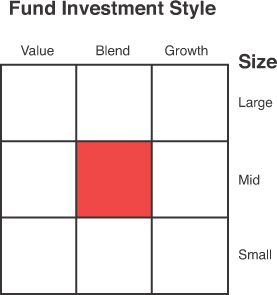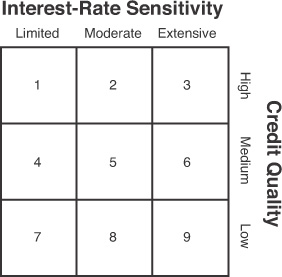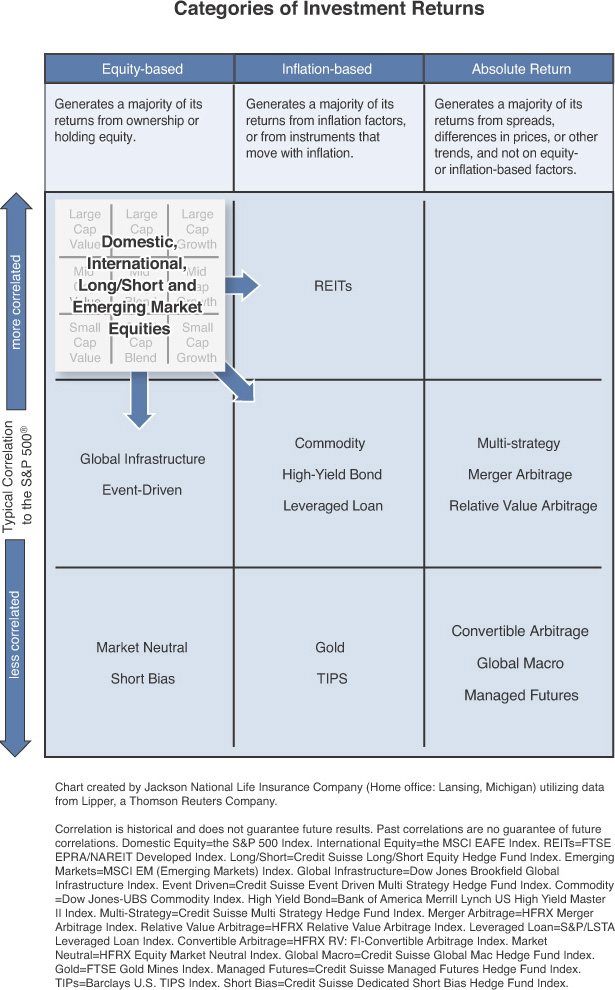Nine. Think Outside the Style Box™
What makes a champion tick?

I am a big basketball fan and vividly remember watching Game Five of the 1997 NBA Finals between the Chicago Bulls and the Utah Jazz. Now known as “The Flu Game,” it featured a weakened and feverish Michael Jordan who was advised by doctors not to play. The news was a crippling blow to a team that had already lost its series momentum, having just ceded back-to-back games and allowing Karl Malone, John Stockton, and the rest of the Jazz to tie the series at two games apiece.
Jordan decided to ignore doctor’s advice and suited up to deliver one of the best performances of his legendary career. At the end of the night, he’d racked up 38 points, seven rebounds, five assists, three steals, and one block. The iconic image of Jordan collapsing into teammate Scottie Pippen’s arms as the final seconds ticked away is forever embedded in sports lore about the will to succeed. Jordan and the Bulls followed up this amazing feat with another victory, making them the NBA Champions (Jordan’s fifth in his career).117
117 Jonathan Weinberg, Bleacher Report, “Eight of the Most Inspirational Moments in Basketball History,” February 2010.
If only we all had the drive, strength, talent and resources of Michael Jordan, in sports and life. In the investing world, we may not have Jordan-like talents, but perhaps we can all learn to follow a disciplined approach by following a similar playbook.
Boxing Out: A Defensive Strategy
How many retail investors know of Sharpe ratios, regression analysis, alpha and beta, yield curves, and so many of the other terms that money managers regularly employ? Not many, I would guess. Because of this, many financial services firms have made attempts to educate and make the portfolio selection process easier to understand. In 1992, Chicago-based mutual fund research firm Morningstar released its now famous Morningstar Style Box strategy (see Figure 9.1) to help individual and professional investors understand the differences between mutual fund investment styles by comparing individual securities they hold. 118
118 Morningstar, “Fact Sheet: The New Morningstar Style Box Methodology,” 2002.
As explained by the firm, the Style Box consists of nine squares arranged on a “...grid that provides a graphical representation of the ‘investment style’ of stocks and mutual funds.”119 Stock funds are classified along the vertical axis according to market capitalization, while their investment style is delineated along the horizontal axis. Morningstar’s definitions of market capitalization, the total equity market value of the company, split stocks into large-, mid-, and small-cap based on their relation to one another. Fixed income funds are classified along the columns according to their credit quality and classified along rows according to their sensitivity to interest rate changes. In other words, Morningstar combines credit ratings assigned (for example, by Standard and Poor’s or Moody’s) for each bond within the fund with the default-rate curve to display weighted-average credit quality for the fund on the vertical axis, and on the horizontal axis is how interest rate changes are expected to adversely affect the value of the fund (as shown in Figure 9.2).
119 Morningstar, “Morningstar Style Box,” 2013.
With its domestic equity Style Box, for instance, a vertical and horizontal axis can be used to categorize a mutual fund into one of nine categories: large value, large blend, large growth, mid value, medium blend, medium growth, small value, small blend, and small growth. Plot it on the grid and you know into which category it falls. The idea was to help investors better understand the differences between investment styles and assist in mapping a diversification strategy.
Simply put, it’s a visual aid of what can be confusing concepts that aims to help financial professionals and clients alike understand the position of a potential investment in relation to another mutual fund or security.
Xs and Os: Running a New Play
In my opinion, nine-box strategies can still work very well for traditional investment portfolios and, with a broader scope, could work for alternatives as well. I believe that adding certain alternative asset classes could help create diversification and risk-adjusted returns with lower correlation that’s consistent with the investor’s goals and objectives as well as risk tolerance. Examples of these possible asset classes include (across the top of the X axis, left to right):
![]() Equity-based: The majority of returns come from ownership or holding equity.
Equity-based: The majority of returns come from ownership or holding equity.
![]() Inflation-based: The majority of returns come from inflation factors or from instruments that move with inflation.
Inflation-based: The majority of returns come from inflation factors or from instruments that move with inflation.
![]() Absolute Return: The majority of returns come from spreads, differences in prices, or other trends, and not on equity- or inflation-based factors.
Absolute Return: The majority of returns come from spreads, differences in prices, or other trends, and not on equity- or inflation-based factors.
Using data from Lipper, another mutual fund research and rating firm, I assigned various asset classes to one of the three categories of investment returns as I see them (see Figure 9.3). Then, I ordered them in order of their correlation to the general market (as measured by the S&P 500 Index). In other words, each box along the Y axis would then be less and less correlated the further one moves away from the axis intersection located in the upper left side of the grid.
Not only does each of the examples above provide a range of lower correlations to potentially reduce overall portfolio volatility, they can also provide a variety of different sources for potential investment return.
Driving the Lane: The Importance of (Timely and Consistent) Yield
There is an aspect of investing that focuses on generating current and future sources of income, one that involves stocks and bonds. With income-generating stocks, the individual can expect a dividend, but the timing and amount of the payment is often dependent on the company’s board of directors. On the other hand, certain types of bonds provide interest payments to the bondholder, which the individual expects on a quarterly, semiannual, or annual basis and, in some cases, the return of the original investment when it eventually matures.
One way to value an investment is by calculating future cash flows. For a return with relatively low risk, such as with Treasury bonds, a higher price will generally be paid by the investor, resulting in a lower yield. Conversely, higher risk is typically required in order to incur higher returns, but this also might result in higher volatility and financial stress. Additionally, yields are affected by supply and demand, as well as interest rates. As interest rates rise overall, bond prices decline, as the two are inversely related. With Treasury bonds, the Treasury Department sets a fixed face value and interest rate. If demand is strong, the Treasury bond will go to the highest bidder at a price above its face value, which means it will be sold for more than the amount on the certificate.
Stocks, on the other hand, do not carry a specified interest rate, as the potential for return comes from dividends or the stock’s resale value in the market. The resale value is dependent on the supply and demand for the stock. Their dividends are not a set amount, but are declared by each company’s board of directors and can differ from year to year. What happens if investors have a large concentration of assets in dividend paying stocks, or a large concentration in one dividend paying stock? The result could be devastating to the investor, and that’s exactly what happened at the stock market’s low in March of 2009, when a large commercial bank announced it would cut its dividend by 85%.120 If you were a shareholder who relied on the dividend, as some shareholders did, the cut likely impacted your income. Again, we have the benefit of hindsight in evaluating their mistake; after all, it was a large and stable bank. Few saw the toll the credit crisis would exact on the American banking system. This, combined with the bank’s purchase of a competitor barely two months earlier, resulted in enormous financial stress on the institution, and was the reason for the cut.
120 Marshall Eckblad and Mike Barris, The Wall Street Journal, “Wells Fargo Cuts Its Dividend 85%,” March 7, 2009.
This further emphasizes the critical importance of a well-balanced and diversified portfolio. Think of investing as creating a diverse collection of cash flows that are obtained from different sources and return drivers. Recall our lemonade stand example from Chapter Five, which largely depended on the uncontrollable variables of temperature and climate in which you operate. If you only offer lemonade, business will transact mainly on sunny days. But what happens if it rains? Would offering umbrellas in addition to lemonade be a wise move? Even on sunny days, would offering sunglasses and sunscreen appeal to those who don’t like lemonade?
For a real-world example, consider Google, one of the most successful companies of the Internet age with billions of dollars in market capitalization. Yet it continues to diversify its product offerings through its acquisition of the Android operating system,121 futuristic computer glasses (marketed as Google GlassTM), and even a music sharing service.122
121 Veriqual, “History of Andriod OS, from Cupcake to Jellybean,” March 2013.
122 Larry Popelka, Bloomberg Businessweek, “Google is Winning the Innovation War Against Apple,” May 2013.
You might ask why they would diversify, as it seems unlikely the world will ever tire of search engines, or that any other website could compete. But “never say never” is a good axiom in life as well as investing. Alternative investments, therefore, are an example of tools that can help create ideas for portfolio diversification.
From the Alt Vault: Valuable Takeaways from Chapter Nine
Investors are confused about how to “get back in the game” following a period of hyper-volatility. A financial professional acts as a coach to get their clients off the sidelines. One tool at the financial professional’s (and investor’s) disposal over the past two decades is the Morningstar Style BoxTM. I’d suggest adding alternative investments as an update for the new investing environment.
![]() Good investing discipline comes from repetitive behavior. A financial professional can help.
Good investing discipline comes from repetitive behavior. A financial professional can help.
![]() The Morningstar Style Box can still work well for traditional portfolios.
The Morningstar Style Box can still work well for traditional portfolios.
![]() A portion of your portfolio may be dependent on the impact interest rates have on financial markets.
A portion of your portfolio may be dependent on the impact interest rates have on financial markets.
What’s next: A good portion of income is dependent on the growth of the economy and health of a company.



